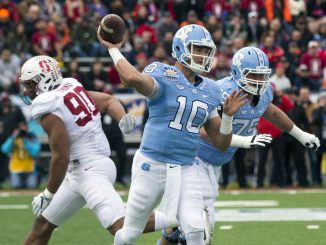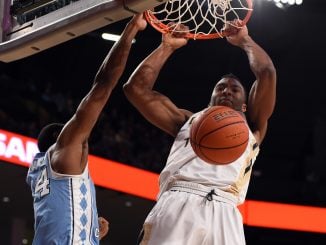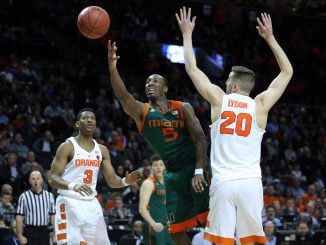
When a person tears an Achilles it feels like someone kicked them in the back of the leg.”When it happened to me on the field in 2013, I actually turned around, to look back and see who it was,” Duke quarterback Thomas Sirk said. “It felt like they either kicked me or threw a ball at my leg. There was no one there. I felt immediately the pressure and the pain.”Sirk took a moment to reflect on everything that’s happened since he went down with the Achilles injury three years ago.”The second time it happened, I didn’t have to look back,” he added.Sirk was a promising redshirt freshman at Duke when he tore his right Achilles in spring, 2013. He missed the entire season recovering from it.This February, Sirk tore his left Achilles during a team training session.That put Sirk in an elite club. While the injury is fairly common in football, it’s almost unheard-of for someone to tear the Achilles in both legs.”I know of one person before,” Sirk said. “If you remember our cornerback (2014 Duke alumni and current Pittsburgh Steeler) Ross Cockrell. His dad tore both of his Achilles but he did it when he was older. But I haven’t heard of anyone tearing both Achilles this young.”Sirk doesn’t know of any family history of Achilles problems and isn’t sure why he ended up in this position.”I always heard that if you tear one, you’re to tear the other, that it’s more likely to happen” Sirk said. “I don’t know why. I don’t know if it has to do with the anatomy. We still haven’t figured out why it happened to me. I don’t think we ever will find an answer, exactly. “Sirk hasn’t spent much time worrying about why it happened. He knew what it would take to get back onto the field, and he’s been busy attacking that work.”I started the rehab process immediately after surgery,” he said. “I kind of knew what to expect and what the process was going to be composed of. Immediately, I accepted there’s nothing you can do about the injury. I had to move forward. That’s one thing you can control, is control your attitude. That’s what I’ve did. Every week I’ve gotten better and seen improvement.”Very quickly, Sirk began to see results from his attitude. He blew past the first milestone in the recovery process.”One of the first things they have you do is a calf press,” he said. “That’s where they test to see when you can do a single-leg calf press on the ground. “I think it was around six or seven months before I was able to do that on my right side. This time, I was able to do that right around the five-month mark, in July.”Sirk is already back on the field, although he’s not 100 percent cleared for all activity yet.”I am running and dropping back in the pocket, throwing,” he said. “I’m still taking it day by day. My expectation is to be back by the season opener.”Coach David Cutcliffe estimated that Sirk is about a month ahead of schedule in his recovery, declaring himself “amazed.” He even raised the possibility that Sirk will be ready by the season opener.”Thomas is going to play and be true to the way he plays,” Cutcliffe said. “The goal is to get him 100 percent ready to do that. As we evaluate August, we’re not trying to see if he’s ready to play in his first game August 8th (the opening of Duke’s preseason practice). That’s not the goal. The goal is to see if we can get him to the point for September 3, to play like Thomas Sirk plays to be successful.”Just as Sirk didn’t ponder his bad luck in February, he hasn’t worried about the reasons why his recovery has beaten the odds.”Honestly, I’ve just been responding to my body,” he said. “I feel like my body this timeI don’t know what’s exactly different about my anatomy, on my left side from my right, if there even are any differences. I would just say that my body has allowed me to do things more rapidly.”Sirk is still being cautious. A calf strain late in the recovery process set him back the first time he went through this, and he doesn’t want that to happen again. He’s also making sure he’s fully back before he takes the field to lead his team.”I won’t come back if I’m hesitant about being who I am as a football player. I won’t return to the field until I’m ready to do those things. I don’t want to come out there and be an average player. I want to come out and be better than I was last year.”Sirk’s first step in accomplishing that is his refusal to look back.



